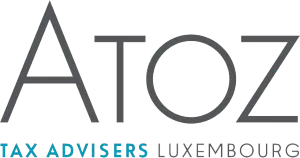- in Middle East
- in Middle East
- with readers working within the Accounting & Consultancy industries
OUR INSIGHTS AT A GLANCE
- The Global Anti-Base Erosion rules, also called "Pillar Two", provide for a coordinated system of taxation intended to ensure that large multinational enterprise groups pay a minimum level of tax (15%) on the income arising in each of the jurisdictions where they operate.
- On 15 December 2022, the Council of the European Union formally adopted the Pillar Two Directive. Luxembourg, like any other EU Member State, has to transpose the Directive into its domestic law by 31 December 2023 at the latest. The new rules will apply to tax years starting on or after 31 December 2023, so as from 1 January 2024 in most cases, which leaves very little time to adapt.
- While there are certain exemptions available for investment funds that carve them out entirely from the Pillar Two rules, this exemption will by no means automatically apply to all investment funds since a specific set of criteria needs to be fulfilled.
- Investment fund managers should therefore anticipate the upcoming changes now, analyse the impact on their fund structures and adapt, if needed, their procedures and fund documentation accordingly to avoid collateral damage.
The Global Anti-Base Erosion ("GloBE") rules, also called "Pillar Two", provide for a coordinated system of taxation intended to ensure that large multinational enterprise ("MNE") groups pay a minimum level of 15% tax on the income arising in each of the jurisdictions where they operate. The OECD model rules to give effect to the GloBE rules, initially expected to be released by the end of November 2021, were finally published by the OECD on 20 December 2021.
In December 2021, the EU Commission published a Pillar Two Directive proposal. However, this proposal raised concerns for a few member states, a consensus was difficult to reach, and its adoption was postponed many times, keeping everyone in suspense. On 15 December 2022, the EU Council formally adopted the Pillar Two Directive31 and all EU Member States have to transpose the Directive into their domestic laws by 31 December 2023. The new rules will then apply to tax years starting on or after 31 December 2023, so as from 1 January 2024 in most cases, which leaves very little time to adapt.
The GloBE rules will apply to MNE groups with an annual group turnover of at least EUR 750 million based on consolidated financial statements in at least two of the four fiscal years immediately preceding the tested fiscal year.
An MNE Group means any group that includes at least one entity or permanent establishment that is not located in the jurisdiction of the parent entity. However, at EU level, to ensure compliance with the fundamental freedoms, the Pillar Two Directive also targets large-scale domestic groups that have a combined annual group turnover of at least EUR 750 million based on consolidated financial statements. An entity or permanent establishment that is part of an MNE group or a large-scale domestic group is considered as a constituent entity. In simplified terms, a group involves all constituent entities, i.e. entities (transparent or not) that are related through ownership or control such that the assets, liabilities, income, expenses and cash flows of those entities are included in the consolidated financial statements on a line-by-line basis.
Government entities, international organisations, non-profit organisations, pension funds and investment funds that are ultimate parent entities of an MNE group are so-called excluded entities which are not subject to the GloBE rules. However, a number of Luxembourg investment funds will not be able to benefit from the carve-out rule as they will fail to meet all criteria.
Investment fund managers should anticipate the upcoming changes, analyse the impact on their fund structures and adapt their procedures and fund documentation. There are three main areas in an investment fund context that have to be considered from a Pillar Two perspective: Potential impacts may arise at the level of (i) the fund manager and its related undertakings, (ii) the fund itself and (iii) the portfolio companies directly or indirectly owned by the fund (the latter typically rather being relevant in a private equity context).
The potential impacts vary for every fund manager and fund structure, depending on the individual facts and circumstances of the case at hand such as the underlying asset class, the jurisdictions involved and the composition of the investor base.
While there are certain exemptions available for investment funds that carve them out entirely from the GloBE rules, this exemption will by no means automatically apply to all investment funds since a specific set of criteria needs to be fulfilled in order to be considered as an excluded entity. Typical cases where no carve-outs are available are single investor funds and other managed accounts.
The starting point of any Pillar Two impact analysis is to determine the scope of consolidation for financial accounting purposes.
Fund managers may be required to consolidate funds or fund-related entities for accounting purposes (e.g. on the basis of an extensive level of control over the fund or due to a significant exposure to a variable remuneration). In this case, the fund manager itself may be directly impacted by a potential top-up tax.
Moreover, majority investors may consolidate the fund or its subsidiaries. Even though we would expect this to be rare, fund managers have to request and obtain specific information to be in a position to assess any impact on the fund and to be aware of potential tax filing obligations. Therefore, fund documents have to be updated as of now to identify potential risks in advance and to hold the fund manager as well as minority investors harmless from and against any Pillar Two related claims.
Finally, the portfolio level needs to be assessed, e.g. where the fund directly or indirectly holds majority stakes in one or several MNE groups that exceed the turnover threshold. Since funds are generally exempt from consolidation requirements, this requires a careful analysis of the investment structure to determine the scope of the "group" for Pillar Two purposes and to assess whether the turnover threshold is exceeded or not.
In conclusion, fund managers should act now to be prepared for the upcoming changes and manage their own as well as their funds' Pillar Two risks and to avoid collateral damage.
The content of this article is intended to provide a general guide to the subject matter. Specialist advice should be sought about your specific circumstances.


